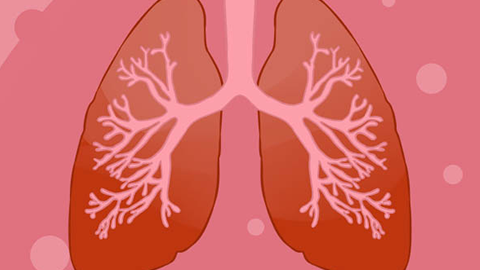How to eliminate lung nodules
Under normal circumstances, pulmonary nodules may be caused by environmental factors, unhealthy lifestyle habits, pneumonia, tuberculosis, sarcoidosis, and other factors. General treatment and medication can help improve the condition. It is important to seek medical attention promptly and follow medical advice for treatment. Specific details are as follows:

1. Environmental Impact: Long-term exposure to harmful substances such as asbestos and vinyl chloride may lead to pulmonary nodules, as these substances can enter the respiratory system and react within the lungs. It is important to improve the living environment and avoid exposure to harmful substances. If nodules have already formed but there are no obvious symptoms and the nodules are small, regular follow-up examinations can be conducted to monitor changes.
2. Unhealthy Lifestyle Habits: Long-term smoking or exposure to secondhand smoke can damage the lungs and induce the formation of pulmonary nodules. Harmful substances in cigarettes, such as nicotine and tar, can deposit in the lungs, irritating lung tissue and causing inflammatory reactions that lead to nodule formation. Quitting smoking can gradually restore lung function and reduce damage from harmful substances. Additionally, increasing physical exercise can improve pulmonary function.
3. Pneumonia: Pneumonia is an inflammatory condition of the lungs caused by infection with pathogens such as bacteria or viruses. During the inflammatory process, lung tissue may become damaged and develop an inflammatory response, leading to the formation of pulmonary nodules and symptoms such as coughing. Treatment may involve the use of medications such as amoxicillin capsules, cefixime granules, and compound methoxyphenamine capsules, as directed by a physician.
4. Tuberculosis: Pulmonary tuberculosis is a chronic infectious disease caused by infection with Mycobacterium tuberculosis. The bacteria multiply in the lungs, triggering an inflammatory response that damages lung tissue and forms nodules, often accompanied by low-grade fever. Under medical guidance, medications such as isoniazid tablets, rifampin tablets, and pyrazinamide tablets can be used to kill the tuberculosis bacteria.
5. Sarcoidosis: Sarcoidosis is a multi-system granulomatous disease of unknown cause, primarily affecting the lungs and lymphatic system. Its pathogenesis may be related to multiple factors including genetic predisposition, environmental influences, and immune mechanisms. As directed by a physician, medications such as ribavirin tablets, ethambutol hydrochloride tablets, and ibuprofen sustained-release capsules may be used for anti-tuberculosis, anti-infective, and pain-relieving purposes.
Routine preventive measures should be strengthened, including improving living environment and lifestyle habits, to enhance overall immunity.






